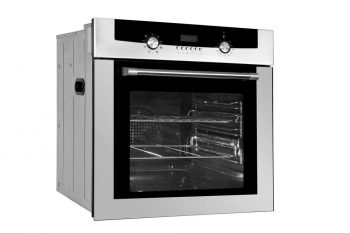
The air conditioning system in your home or office plays a vital role in creating a comfortable environment, especially during the hot summer months. One of the key components of your AC system is the refrigerant, which is responsible for cooling the air. If your AC system isn’t cooling as efficiently as it should, it could be due to low refrigerant levels.
In this comprehensive guide, we’ll explore how to add R410A refrigerant to an AC system. It’s essential to note that handling refrigerants require proper training and certification, so this guide is intended for informational purposes and should only be carried out by a professional.
Adding R410A refrigerant to an AC system involves turning off the AC system, connecting the manifold gauge set to the AC system, and attaching the charging hose to the refrigerant tank. After purging air from the hoses, you start the AC system, measure the system’s current state, and slowly add the refrigerant while monitoring the system’s performance. Once done, disconnect the equipment and check the system’s operation. This process should only be carried out by a certified HVAC technician to ensure safety and efficiency.
Understanding R410A Refrigerant
R410A refrigerant, also known as Puron, Forane 410A, Genetron R410A, EcoFluor R410, and Suva 410A, is a popular choice for air conditioning applications. It has a higher cooling capacity and is more energy-efficient than older refrigerants like R-22. R410A is less harmful to the ozone layer, but it’s crucial to note that it has a higher global warming potential (GWP), and efforts are being made to develop alternatives with lower GWP.
Indicators Your AC System Needs More R410A Refrigerant
Several signs indicate your AC system may be low on R410A refrigerant:
- Reduced cooling performance
- Increased energy bills
- Ice buildup on the evaporator coil
- Hissing or bubbling noises
- Low pressure readings on the manifold gauge set
- Low subcooling
Necessary Tools and Equipment
To add R410A refrigerant to an AC system, you will need:
- A manifold gauge set compatible with R410A refrigerant
- A refrigerant scale
- A refrigerant cylinder containing R410A refrigerant
- Safety glasses and gloves
- A locking cap key
- A thermometer or temperature probe
- An electronic leak detector
Adding R410A Refrigerant to Your AC System
Here’s a step-by-step guide on how a professional technician would add R410A refrigerant to an AC system:
Step 1: Safety First
Ensure you’re a certified technician with proper training to handle refrigerants.
Step 2: Turn Off The AC System
Before starting, ensure the system is off to avoid any accidents.
Step 3: Connect The Gauges
Attach the manifold gauge set to the AC system. Connect the low-pressure (blue) hose to the suction line service port and the high-pressure (red) hose to the liquid line service port.
Step 4: Connect The Refrigerant
Attach the charging hose to the refrigerant tank and open the tank valve. Place the tank upside down on a scale to measure the amount of refrigerant being added.
Step 5: Purge Air From The Hoses
With the gauges closed on the manifold, slightly open the connection where the charging hose meets the manifold to release any air trapped in the hoses.
Step 6: Start The AC System
Turn on the AC system and let it run for a few minutes to stabilize the pressures and temperatures.
Step 7: Measure The System’s Current State
Monitor the system’s pressures and temperatures using the manifold gauges and temperature probes.
Step 8: Add Refrigerant
Slowly open the low-pressure (blue) manifold valve to add refrigerant to the system.
Step 9: Monitor The System
Keep an eye on the system’s performance as you add refrigerant.
Step 10: Disconnect The Equipment
Close the refrigerant tank valve and the manifold gauges. Carefully disconnect the hoses from the service ports.
Step 11: Check The System’s Operation
Cycle the system on and off at the thermostat to ensure it is operating correctly.
Safety Precautions
When adding R410A refrigerant to an AC system, it’s essential to follow safety precautions:
- Wear appropriate safety equipment.
- Ensure proper ventilation.
- Use the correct tools and equipment.
- Follow the manufacturer’s guidelines.
- Monitor pressures and temperatures.
- Use the subcooling and superheat method.
- Support refrigerant lines.
- Be cautious of moisture.
- Properly dispose of refrigerant.
Conclusion
Although adding R410A refrigerant to an AC system might seem like a straightforward task, it’s a sensitive process that requires professional expertise. Therefore, it’s advisable to hire a certified HVAC technician to handle this task. Not only will they have the necessary tools and knowledge, but they’ll also ensure the job is done safely and correctly, protecting your AC system and ensuring its efficient operation.
Frequently Asked Questions
What is the function of a manifold gauge set?
A manifold gauge set is an essential tool used in HVAC servicing. It allows technicians to read the pressure of various gases in the AC system, helping to diagnose problems and ensure the system is functioning optimally.
What is the role of R410A refrigerant in an AC system?
R410A refrigerant is a key component in an AC system. It absorbs and releases heat, enabling the AC system to cool the air in your home or office. When the refrigerant level is low, the AC system’s cooling capacity is reduced.
Why do I need a certified technician to add R410A refrigerant to my AC system?
Handling refrigerants such as R410A requires special training and certification due to its potential environmental impact and safety risks. Incorrect handling can lead to leaks, inefficient operation, and damage to the AC system. Therefore, it’s best to hire a certified technician to perform this task.
What are the potential hazards of handling R410A refrigerant?
R410A refrigerant is a high-pressure gas that can cause frostbite or eye injury upon contact. It’s also harmful if inhaled and can displace oxygen, leading to asphyxiation in confined spaces. Additionally, it contributes to global warming if released into the atmosphere.
How often should I add R410A refrigerant to my AC system?
Ideally, you shouldn’t have to regularly add refrigerant to your AC system. If the system is working properly, the refrigerant is recycled and reused within the system. However, if you notice signs of low refrigerant (like reduced cooling or increased energy bills), it’s time to call a technician. Regular maintenance can also help detect low refrigerant levels.











